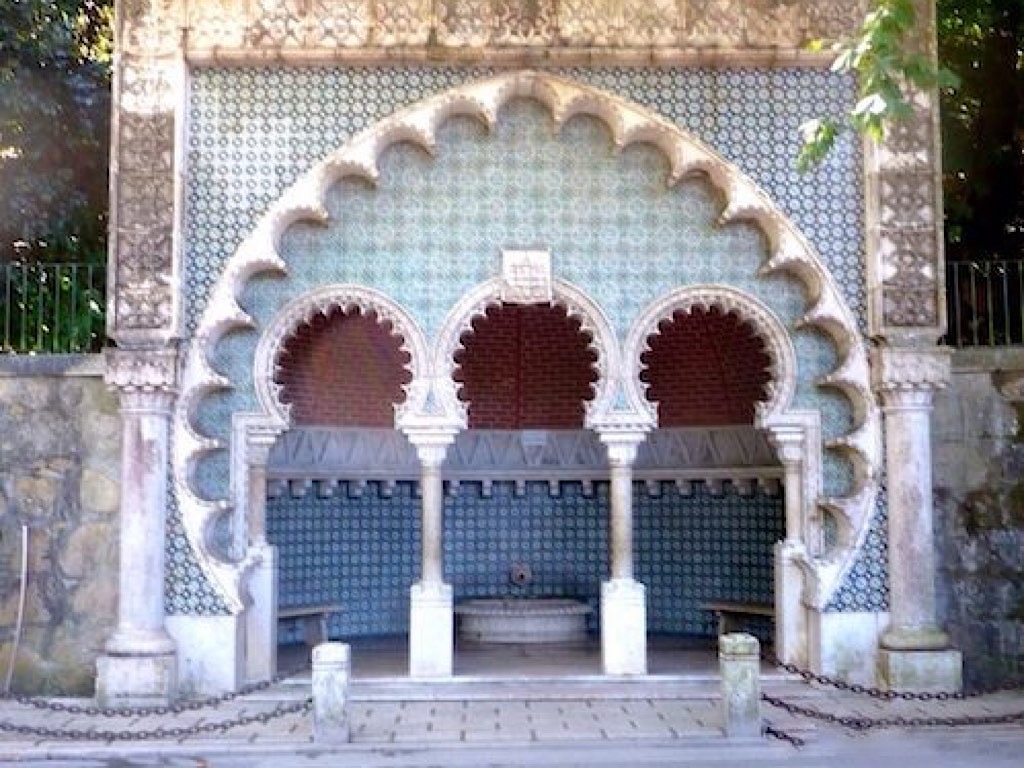
We took a day trip to Sintra to see the town, the Pena Palace and the Moorish Castle. The old town of Sintra is dominated by the Palácio Nacional de Sintra, which can be seen from far away at its gigantic conical chimneys. In the course of the centuries this popular summer residence of the kings got several rebuilding and modifications, so that today it consists of a mixture of different architectural styles.

When you get off the train you take a circular route to the town plaza punctuated by some lovely sculptures along the route.


Owing to its 19th-century Romantic architecture and landscapes, it has become a major tourist center, visited by many day-trippers who travel from the suburbs and Lisbon.


It is very green and cool here. In 1974, Pedro Augusto dos Anjos Teixeira bequeathed to the city council Sintrense, his entire estate (neo-realist sculpture) and also works of his father, Artur Gaspar dos Anjos Teixeira. The town created a museum from these collections, the Museu Anjos Teixeira. The stairs seen above lead down to the museum.


The town is full of reminders of the Moorish past like this tiled bus stop and the old Moorish castle towering above the city.


There are lots of charming little streets, shops and cafes.

The buildings are all very quaint, including the town hall which was completed in 1910. The spire of the Sintra town hall is glazed with reflective green and white tiles displaying motifs of the Portuguese coat of arms. The main spire is flanked by four smaller spires while at the top of the spire is an armillary sphere.

The palace is the best preserved medieval Royal Palace in Portugal, having been inhabited more or less continuously at least from the early 15th up to the late 19th century. Nothing built during Moorish rule or during the reign of the first Portuguese kings survives. The earliest surviving part of the palace is the Royal Chapel, possibly built during the reign of King Dinis I in the early 14th century. Much of the palace dates from the times of King John I, who sponsored a major building campaign starting around 1415. Most buildings around the central courtyard, called the Ala Joanina (John’s Wing), date from this campaign, including the main building of the façade with the entrance arches, the mullioned windows in Manueline and Moorish styles (called ajimezes) and the conical chimneys of the kitchen that dominate the skyline of the city.


We had a snack at the Café Paris, shown above. The cheese Queijo Serra da Estrela comes from one of the colder and highest regions of Portugal. These savory wheels of raw sheep’s milk cheese are coagulated with cardoon thistle and salt and can boast Portugal’s D.O.P. name protection. Traditionally scooped out of its leathery cloth-bound rind with pieces of bread, Serra is a soft, gooey, mildly herbaceous delight. After learning its name, I quickly made this my favorite cheese from Portugal.

